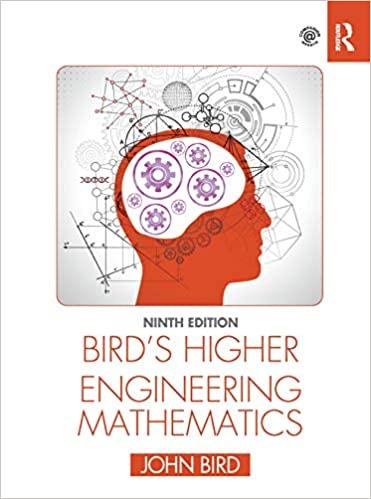Question
I have one question with several parts to it. Please provide your work and/or explanation for each part as I am very confused. Thank you!
I have one question with several parts to it. Please provide your work and/or explanation for each part as I am very confused. Thank you!
2a). Which of the following techniques are visually deceptive in graphing?
a. Truncating the vertical axis
b. Captioning graphs with words like 'plunges'
c. Changing the height and the width of bars or 'pictures'
d. All the above are visually deceptive
2b). Any sample with more than 35,000 observations is considered "scientific."
a. False
b. True
2c). A general rule of thumb is that the median is about ___________ of the way from the mean to the mode for distributions that are mound shaped and moderately asymmetric
a. one third
b. half
c. two thirds
d. none of the above
2d). Results from a random cluster sample
a. can be trusted since the sample incorporates randomness
b. cannot be trusted since the respondents did not necessarily want to participate
c. cannot be trusted since only one cluster might be observed
d. none of the above
2e). To find the probability of the union of mutually exclusive events you can use
a. The General Multiplication Law
b. The Special Multiplication Law
c. The Special Addition Law
d. None of the above
2f). The Standard and Poor's 500 has had an average annual return of 11% with a standard deviation of approximately 19%. Assuming nothing about the distribution of the S&P 500 return, what is the probability that the S&P return will have an annual loss of 27% or more (i.e. a return of -27% or less)?
a. 32%
b. At least 12.5%
c. At most 25%
d. none of the above
Don't copy paste else I will report , answer j your own words
Step by Step Solution
There are 3 Steps involved in it
Step: 1

Get Instant Access to Expert-Tailored Solutions
See step-by-step solutions with expert insights and AI powered tools for academic success
Step: 2

Step: 3

Ace Your Homework with AI
Get the answers you need in no time with our AI-driven, step-by-step assistance
Get Started


